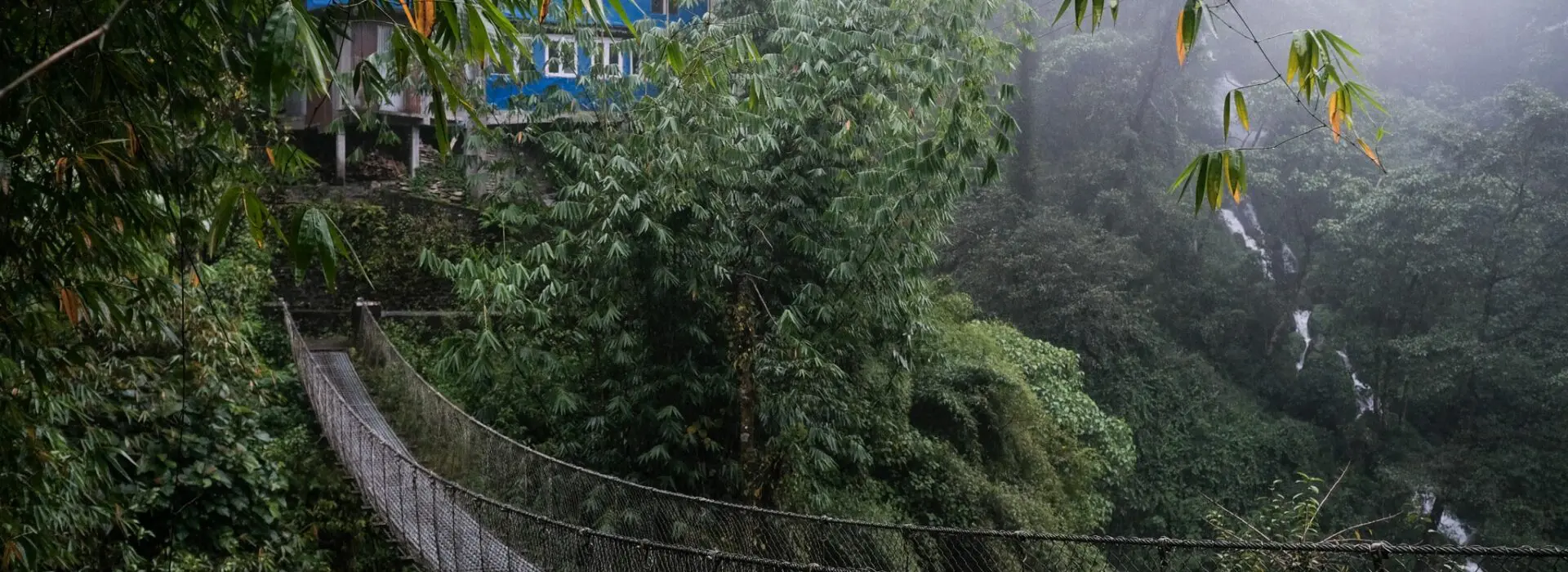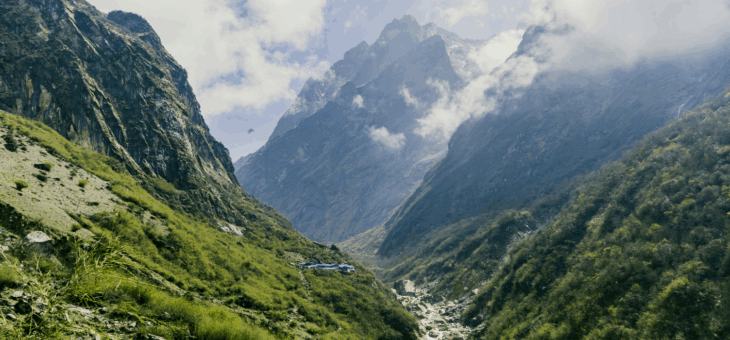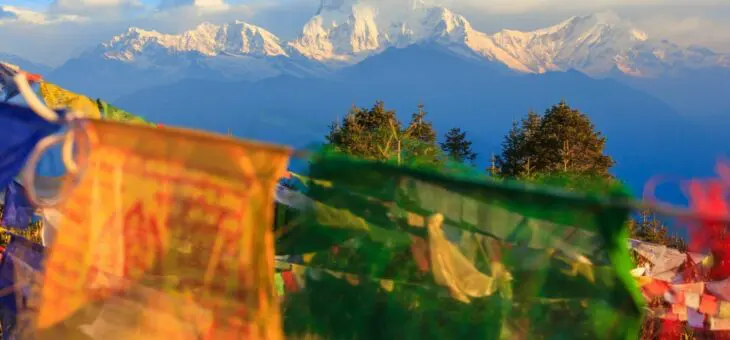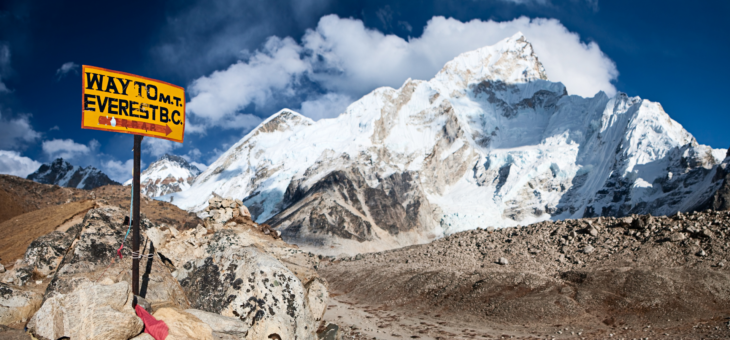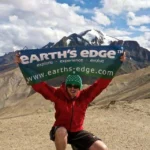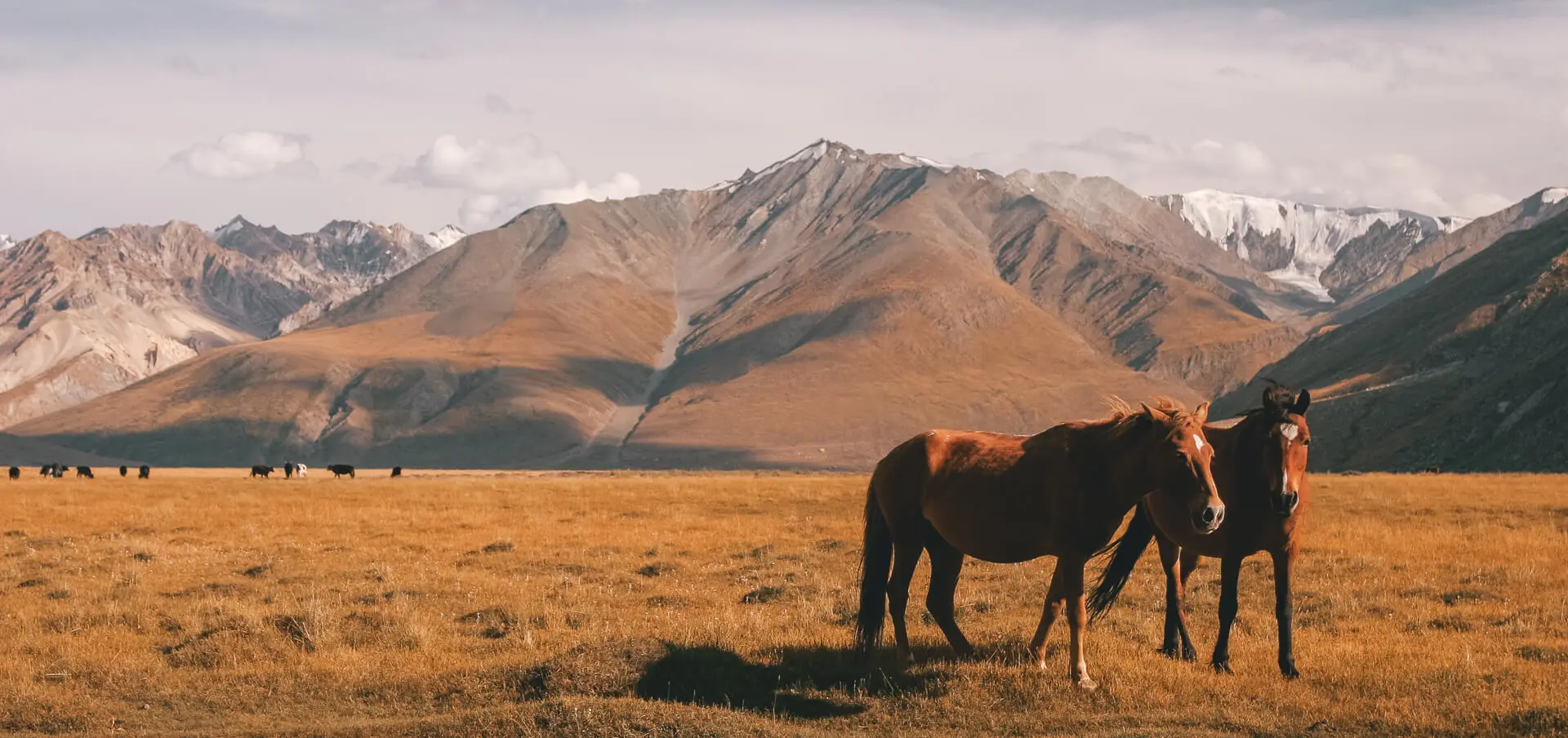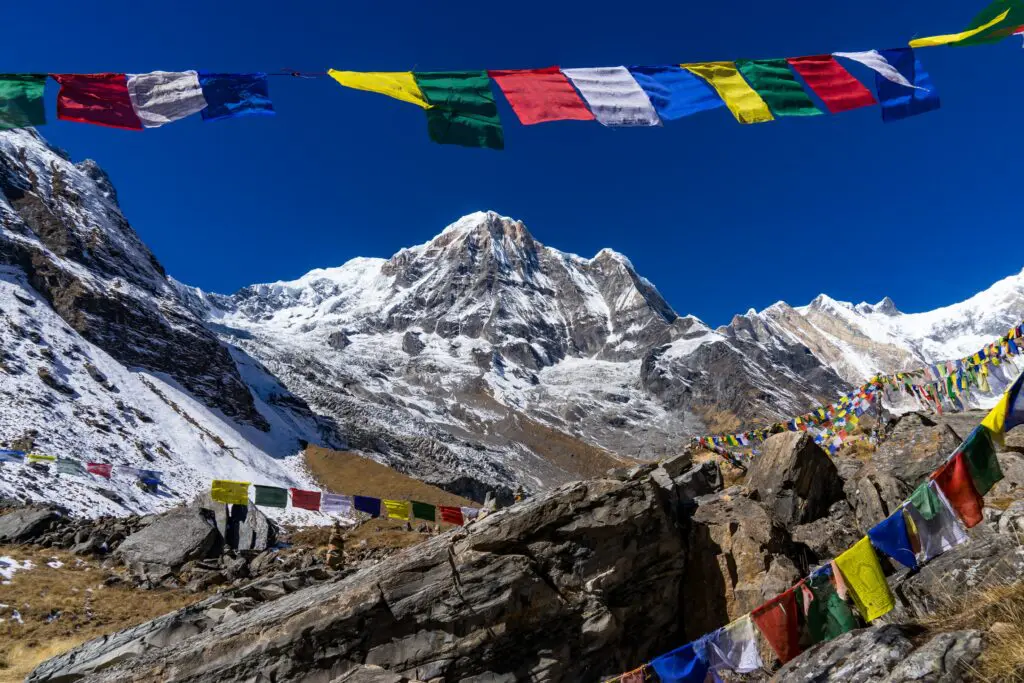
If you’re planning a trek in Nepal’s stunning Annapurna region, you might be wondering how to choose between the Annapurna Circuit and Annapurna Base Camp treks. Both offer incredible Himalayan experiences, but each has its own unique vibe, highlights, and challenges.
In this post, we break down what makes these two routes special, compare the key differences, and help you decide which adventure suits you best, or why you might want to do both!
Quick Overview: Key Differences at a Glance
| Feature | Annapurna Base Camp | Annapurna Circuit (via Nar Phu) |
| Duration | 14 days (10 trekking) | 18 days (12 trekking) |
| Max Altitude | 4,130m (Annapurna Base Camp) | 5,416m (Thorong La Pass) |
| Difficulty | Level 3 | Level 4 |
| Culture | Gurung villages | Tibetan-influenced communities |
| Scenery | Towering peaks | Diverse terrain, gorges, plateaus, passes |
| Best For | Fit beginners & time-limited trekkers | Adventure seekers & cultural explorers |
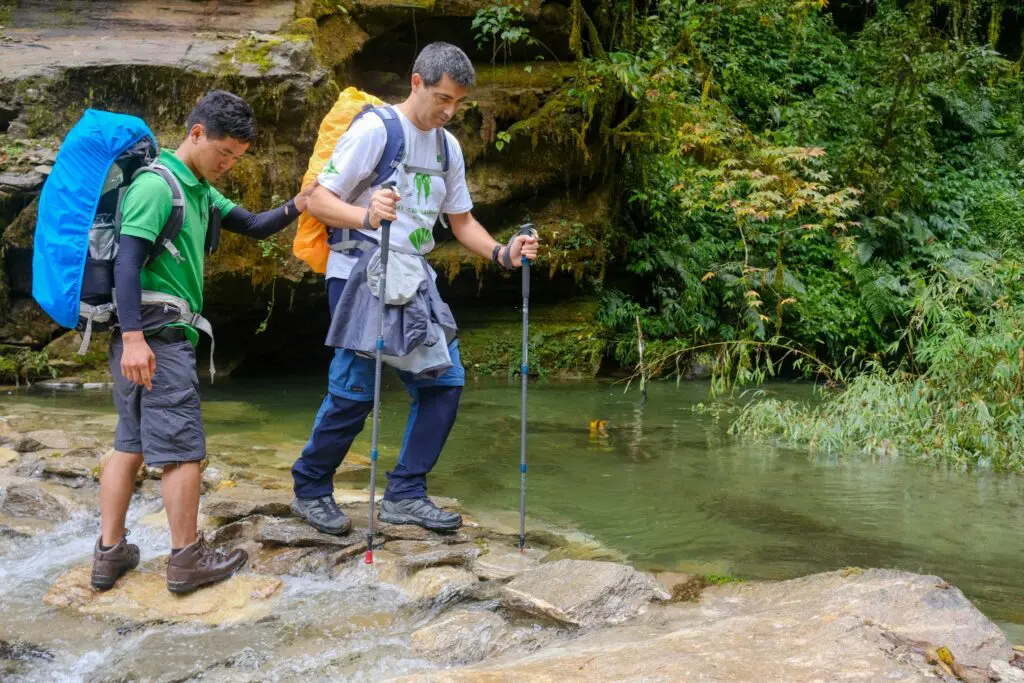
Annapurna Base Camp Trek: A Classic Introduction to the Himalayas
The Annapurna Base Camp trek is one of Nepal’s most popular treks, and for good reason! It’s a relatively short but stunning journey into the heart of the Annapurna Sanctuary, surrounded by towering peaks. It’s an ideal way to experience the grandeur of the Himalayas without going too remote.
Route and Duration
Our Annapurna Base Camp itinerary is 14 days in total, with 10 days of trekking. The trail begins near Pokhara, Nepal’s tourism capital, with a short flight from Kathmandu. From Nayapul, the well-established trail winds through rhododendron forests, terraced fields, and traditional Gurung villages, eventually reaching the glacial basin of Annapurna Base Camp (4,130m).
Stunning Views and Landscapes
Expect lush valleys, waterfalls and dramatic mountain views. From base camp, you’re surrounded on all sides by some of the highest peaks in the world, including Annapurna I, Machhapuchhre (Fishtail), Hiumchuli, and Annapurna South.
Unique Cultural Stops and Scenic Highlights
Along the way, you’ll pass through friendly and vibrant Gurung communities like Chhumrong and Jhinu Danda, offering a glimpse into local Nepali mountain life. One of the highlights on our Annapurna Base Camp trek is the sunrise from Poon Hill, which we visit on day 5. This trek offers a perfect balance of mountain views and cultural immersion.
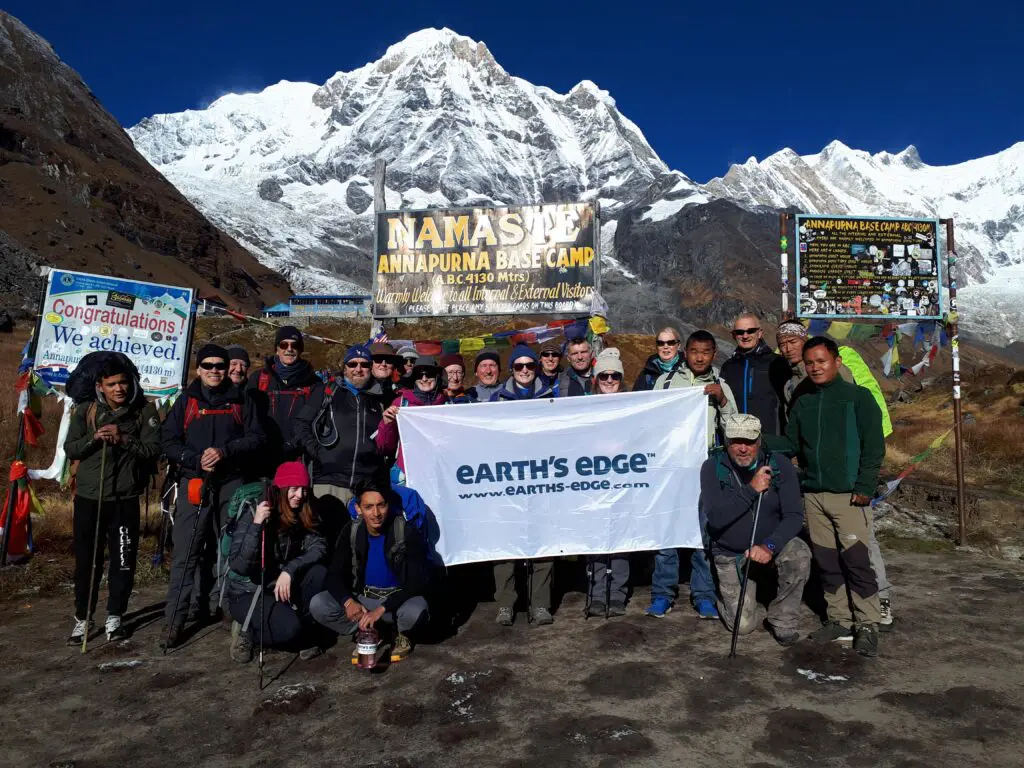
Difficulty and Accessibility
Annapurna Base Camp is a moderate trek, suitable for most people with a good level of fitness, including beginners. No prior high-altitude trekking experience is needed, as we move at a slow, steady pace to aid acclimatisation. It’s ideal for those new to multi-day trekking or high-altitude expeditions.
That said, the trail includes many stone steps, especially on the way to and from Chhumrong. These can be surprisingly tiring on the legs, so good basic endurance and a sense of humour go a long way!
Annapurna Base Camp Trek Summary
- Duration: 14 day total, with 10 days of trekking
- Highest point: 4,130m (Annapurna Base Camp)
- Difficulty: Moderate (Level 3) – suitable for beginners
- Scenery: Spectacular mountain views, lush forests, and terraced farmland
- Accommodation: Comfortable tea houses
- Best for: First-time trekkers, nature lovers, and photographers
- Additional perks: Explore the colourful lakeside city of Pokhara
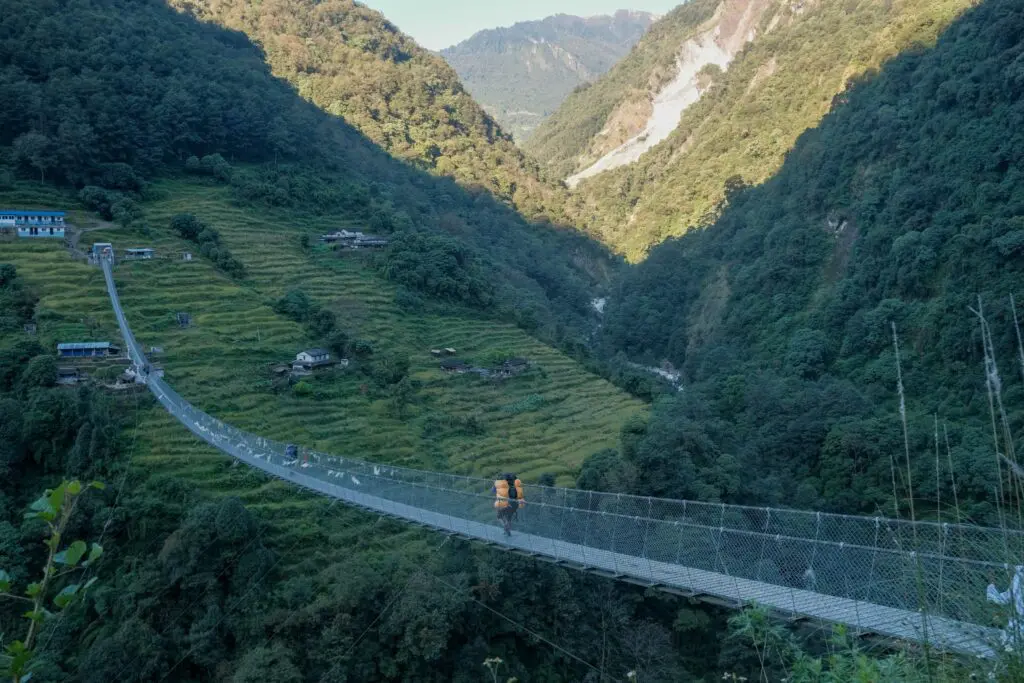
Annapurna Circuit Trek: An Epic Himalayan Loop via Nar Phu & Kang La Pass
If you’re craving a bit more adventure and remoteness, the Annapurna Circuit via Nar Phu and Kang La Pass delivers. This special route blends the classic circuit with a detour into the restricted, high-altitude valleys of Nar and Phu, adding cultural depth and off-the-beaten-track exploration.
Route and Duration
The Annapurna Circuit is a longer trek and offers an epic loop around the Annapurna Massif. This is an 18 day adventure with 12 days of trekking. Branching off at Koto, the route heads deep into the Nar and Phu valleys. We cross the dramatic Kang La Pass (5,320m) before rejoining the traditional Annapurna Circuit near Manang, and continuing toward Thorong La Pass (5,416m), the highest point of the trek.
Diverse and Untouched Landscapes
This region feels like a different world: dry, rugged, and rich in Tibetan character. You’ll pass yak herders’ camps, ancient monasteries, and jagged peaks that few trekkers ever see. The Kang La Pass (5,320m) offers spectacular panoramic views of Annapurna II, Tilicho Peak, and beyond, while the sense of accomplishment crossing the famous Thorong La Pass (5,416m) is a major highlight!
Rich Cultural Variety
The villages of Nar and Phu are steeped in Tibetan Buddhist tradition, complete with centuries-old gompas, prayer flags, and spinning wheels. Foreigners have only been allowed to visit this area since 2002, and it remains one of Nepal’s best-kept secrets.
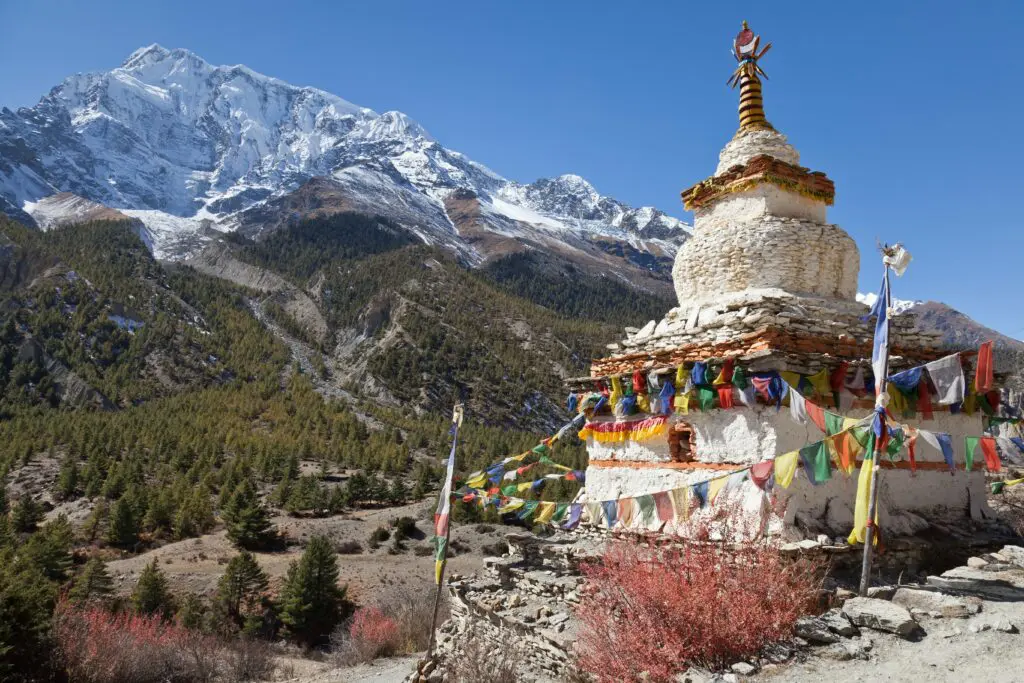
Difficulty and Challenge
We rate the Annapurna Circuit via Nar Phu as a Level 4 expedition, making it slightly more challenging than the Annapurna Base Camp trek. It’s longer, crossing two high passes that are steep and require good physical fitness. It involves more high-altitude trekking, but still doesn’t require technical skills. With proper fitness and acclimatisation, most experienced hikers (and even adventurous first-timers!) can complete it successfully.
Annapurna Circuit Trek Summary
- Duration: 18 day total, with 12 days of trekking
- Highest point: Thorong La Pass (5,461m)
- Difficulty: Moderate to challenging (Level 4) – longer days and higher altitudes
- Scenery: Tibetan monasteries, Himalayan panoramas, yak pastures
- Accommodation: Tea houses
- Best for: Adventure seekers, return trekkers, cultural explorers
- Additional perks: Access to restricted areas and epic high passes
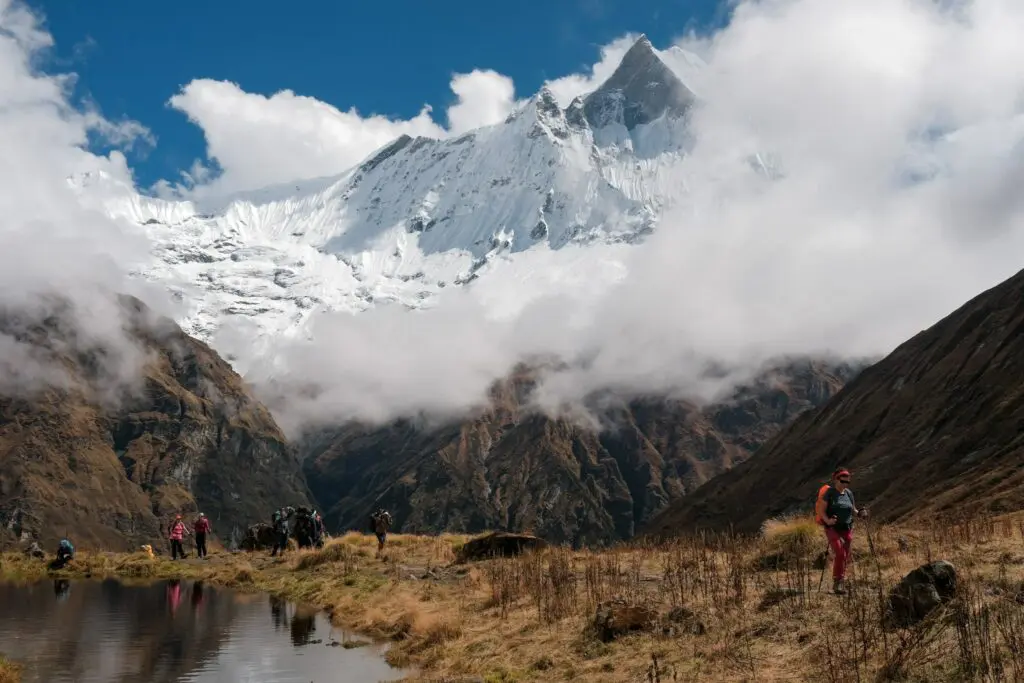
Annapurna Circuit vs. Annapurna Base Camp: Which Is Better?
So, which trek is right for you? The answer really depends on what you’re looking for:
Choose Annapurna Base Camp if you want:
- A slightly shorter, more accessible trek
- Incredible mountain views without extreme altitude
- Comfortable accommodation and well-trodden trails
- A great beginner-friendly introduction to the Nepalese Himalayas
Choose Annapurna Circuit via Nar Phu and Kang La if you want:
- A longer, more remote adventure
- Deep cultural immersion in remote Himalayan communities like Nar and Phu
- The thrill of crossing high mountain passes like Thorong La and Kang La
- A rugged trek with fewer crowds and a true sense of wilderness
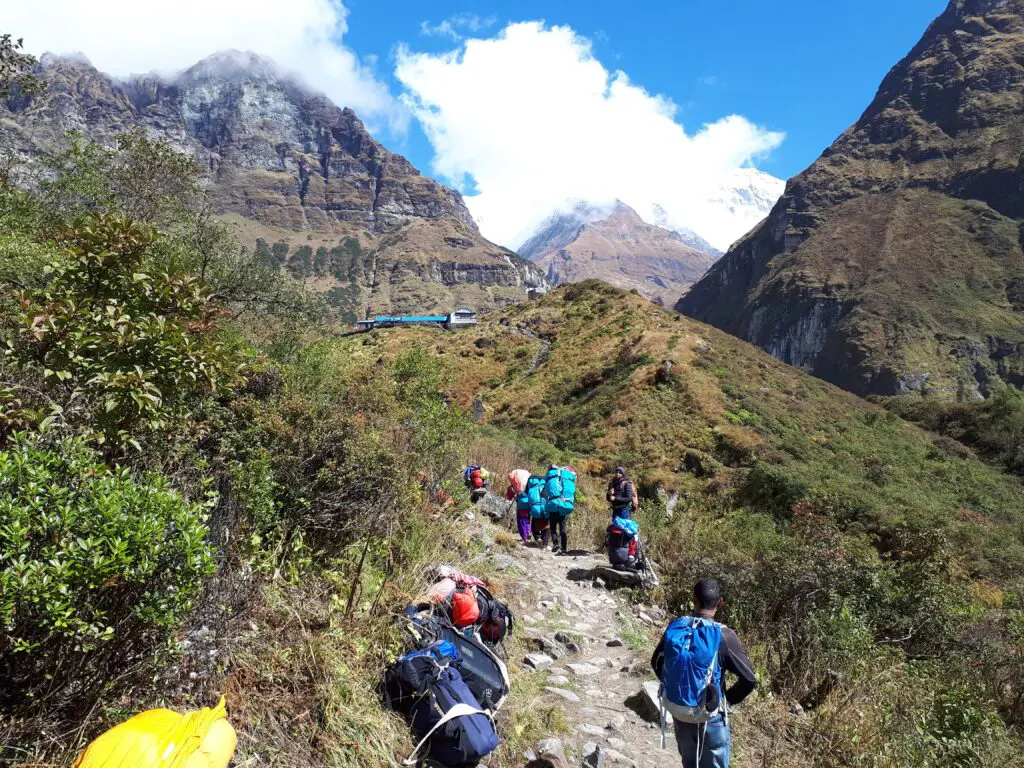
Which Annapurna Trek Is More Difficult?
We consider both the Annapurna Circuit and Annapurna Base Camp treks as moderate, generally involving around 5–7 hours of trekking per day. Neither trek requires advanced or technical mountaineering skills, and both reward steady hikers with incredible natural beauty and cultural richness.
Having said that, the Annapurna Circuit is longer, with more days at higher elevations and more remote terrain. Thorong La Pass (5,416m) is the most challenging day on the itinerary, and is over 1,200m higher than the highest point on the Annapurna Base Camp trek.
Acclimatisation is essential on either trek, but with proper pacing, preparation, and support from our knowledgeable team, both are achievable for fit hikers with a good attitude and an adventurous spirit.
Why Trek in the annapurna region with Earth’s Edge?
When you travel with Earth’s Edge on either of our carefully designed Annapurna expeditions, you’ll be supported by an experienced expedition leader, a full support team, and a dedicated expedition doctor, giving you peace of mind to choose whichever experience in this amazing region calls to you the most!
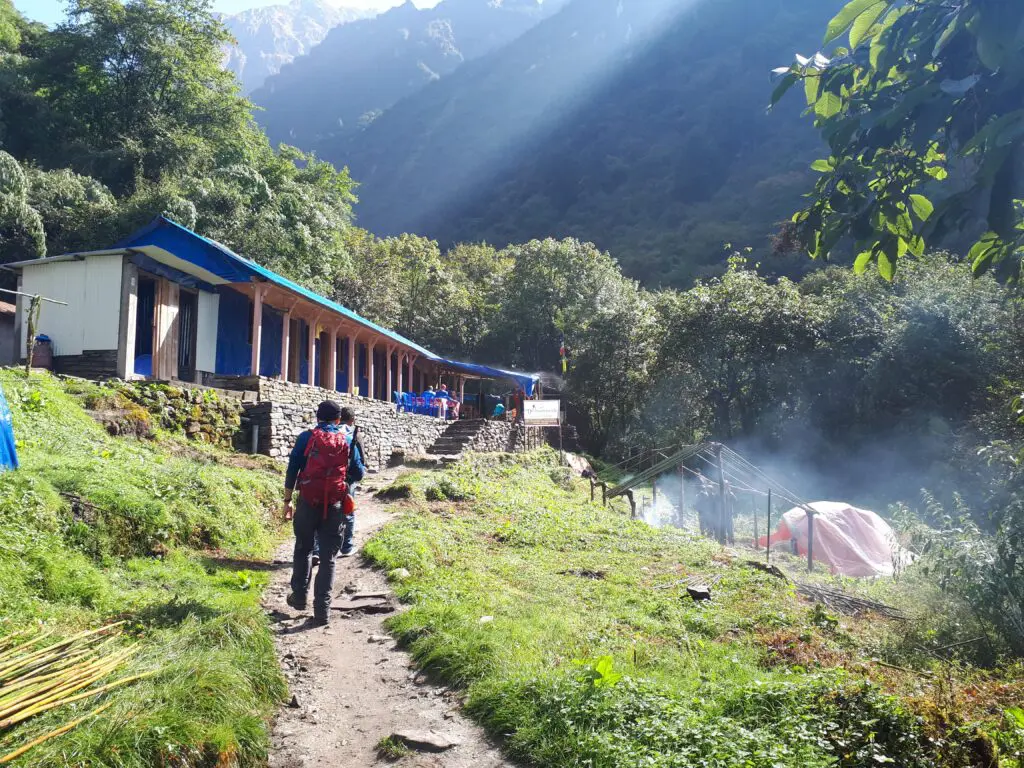
Annapurna Circuit vs. Annapurna Base Camp: Why Not Do Both?
The Annapurna region is so spectacular that many trekkers return more than once! Whether you start with the classic Annapurna Base Camp trek or go for the epic Annapurna Circuit via Nar Phu and Kang La Pass, you’ll create lifelong memories of stunning peaks, fascinating cultures, and the indescribable magic of the Himalayas. Nepal is a place that takes people’s breath away, and you really can’t fully experience it all in just a single trip! It’s a country full of adventure that calls most visitors back, time and time again.
Annapurna Circuit and Annapurna Base Camp are both incredible, accessible adventures that showcase the best of Nepal’s mountains. So why not plan for both and experience the full magic of the Annapurna region?
Ready to Plan Your annapurna Trek?
Read more about our special NEW Annapurna Circuit via Nar Phu and Kang La expedition.
Learn about our iconic Annapurna Base Camp expedition.
If you want help planning your Annapurna adventure or need advice on which trek fits you best, just ask! The mountains are waiting – so book a FREE trip consultation with one of the team to chat about it!
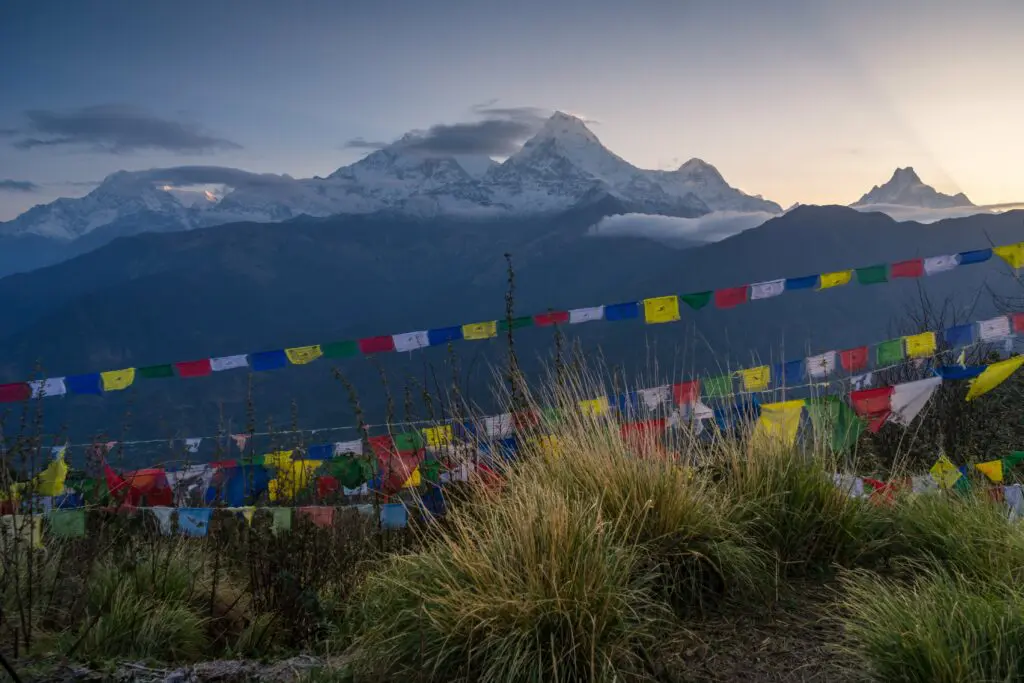
FAQs: Annapurna Base Camp vs. Annapurna Circuit
When is the best time to trek in Annapurna?
March – April and October – November offer the clearest skies and best weather for both treks.
Do I need a permit for Nar Phu Valley?
Yes, you’ll need a special Restricted Area Permit (RAP) in addition to the standard ACAP and TIMS permits. But, when you travel with Earth’s Edge, we take care of everything for you, and permits are included in the total trip price.
How fit do I need to be for Kang La Pass?
You should be in good physical condition, comfortable hiking for 5-7 hours per day.
Is the Annapurna Circuit harder than the Base Camp trek?
Yes, the Annapurna Circuit includes more time at higher altitudes, more remote terrain, and two demanding high pass crossings. However, both treks are achievable for fit individuals without technical climbing skills.
How long does each trek take?
- Annapurna Base Camp: 14 days (10 days trekking)
- Annapurna Circuit via Nar Phu & Kang La Pass: 18 days (12 days trekking)
Can beginners do either trek?
Absolutely! We offer small group treks on both routes, led by experienced guides and include a doctor on every high-altitude trip for your peace of mind.
